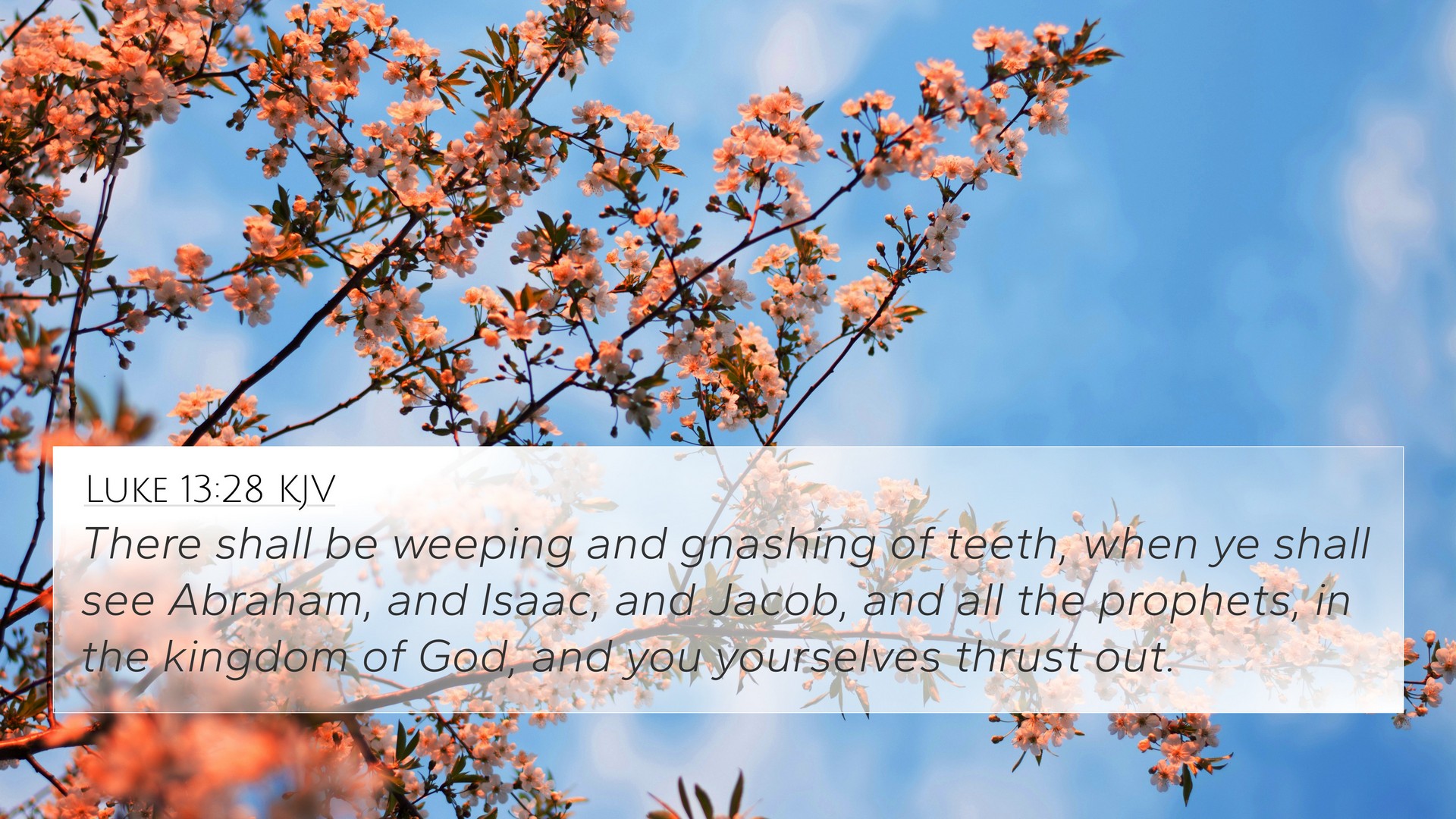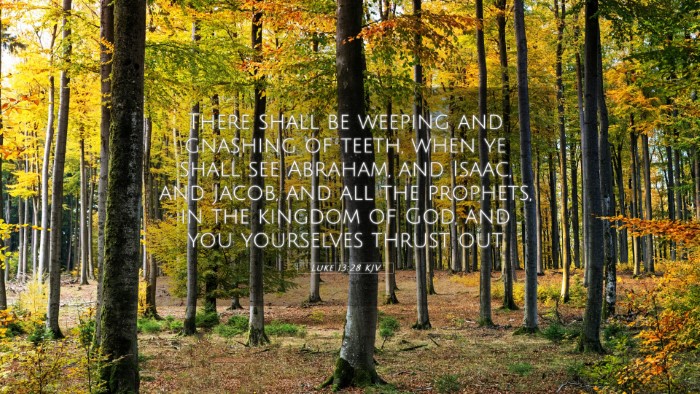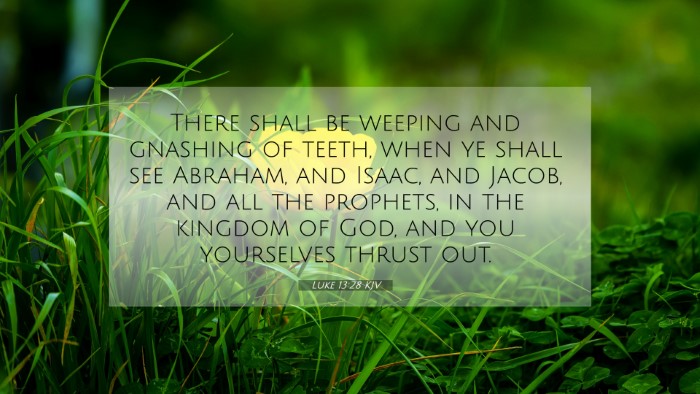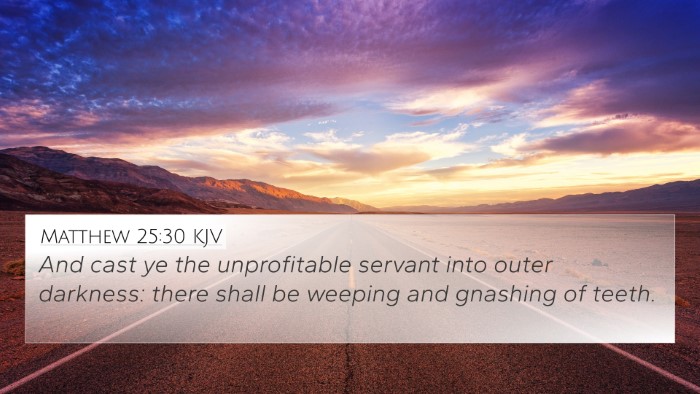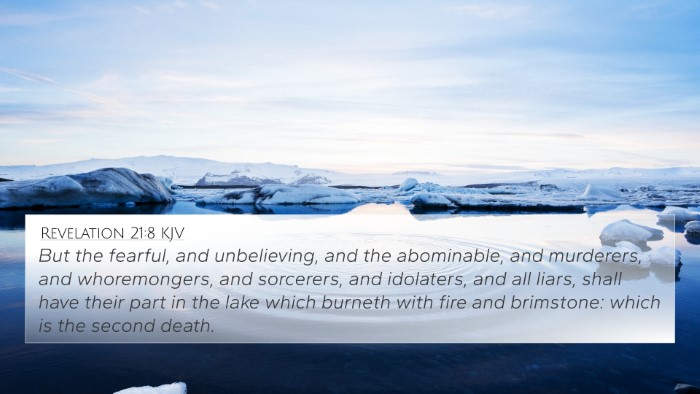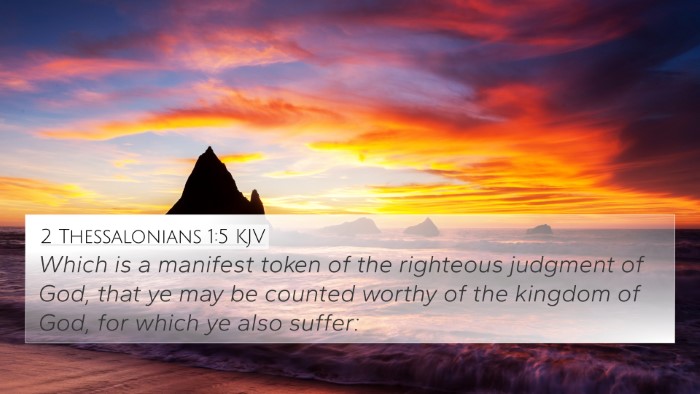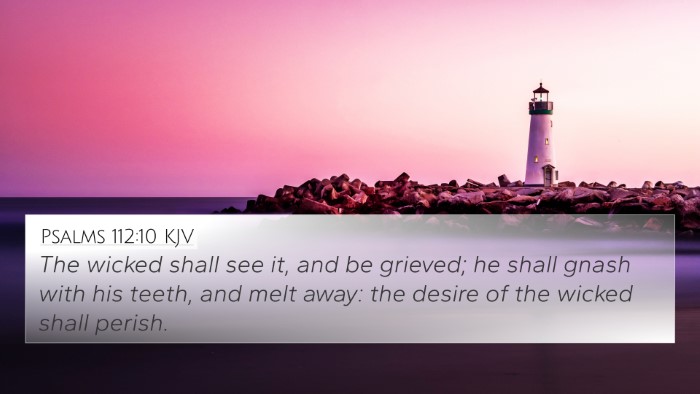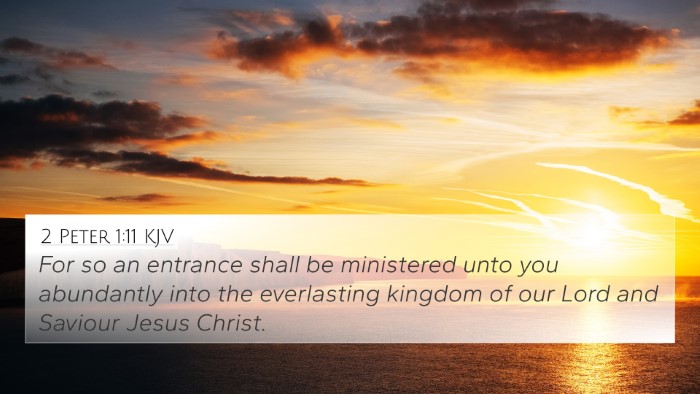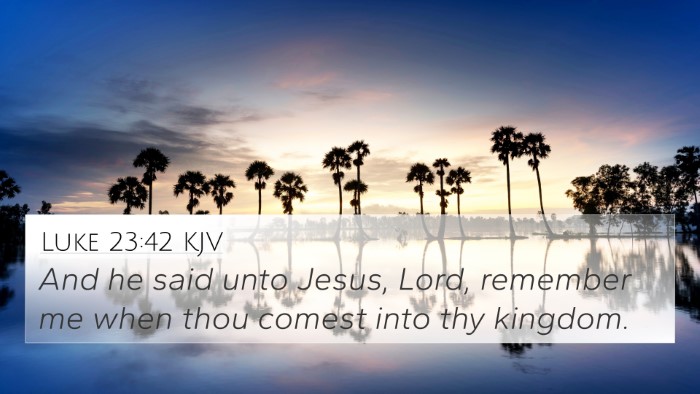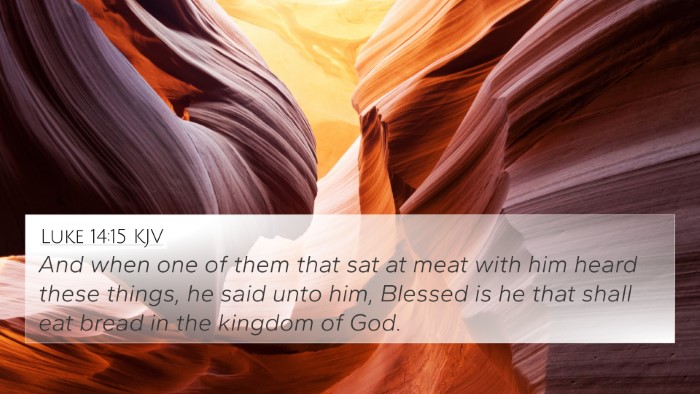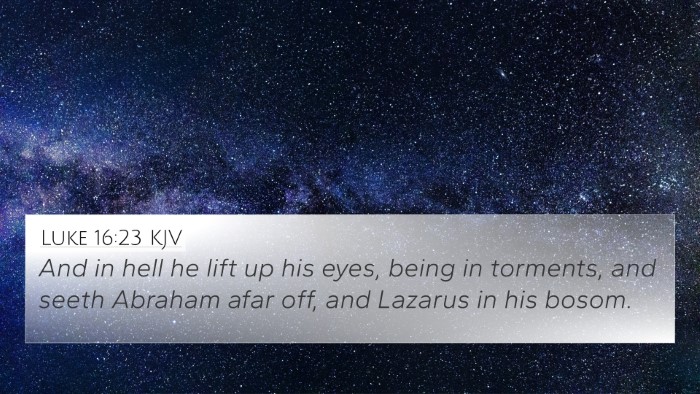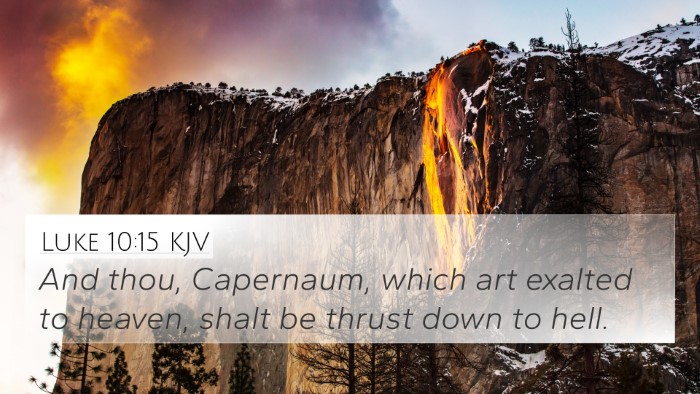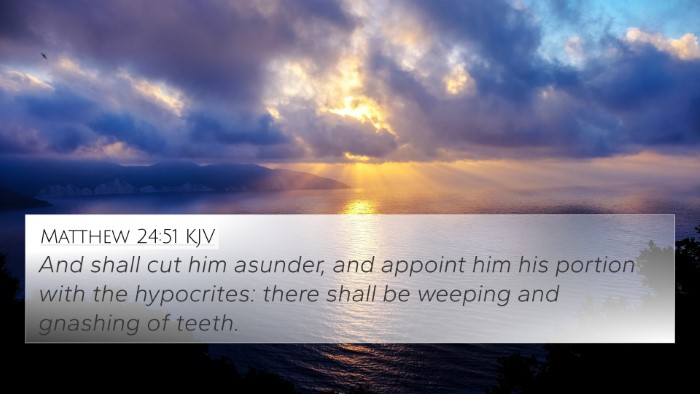Understanding Luke 13:28
Luke 13:28 states:
“There shall be weeping and gnashing of teeth, when ye shall see Abraham, and Isaac, and Jacob, and all the prophets, in the kingdom of God, and you yourselves thrust out.”
This verse emphasizes the dire consequence of failing to enter God's kingdom, as those who are excluded will experience profound sorrow and regret. Below is a succinct analysis using insights drawn from public domain commentaries, including those of Matthew Henry, Albert Barnes, and Adam Clarke.
Verse Meaning and Analysis
The various meanings of this verse can be broken down into key thematic elements:
- Divine Exclusion: The verse conveys the severe reality of divine judgment. Those who reject God will find themselves excluded from the fellowship of the righteous. This aligns with other teachings found in the Gospels about the consequences of disbelief.
- Recognition of the Blessed: The mention of Abraham, Isaac, Jacob, and the prophets signifies the honor and glory of those who believed and served God faithfully. It underscores the vastness of God’s kingdom, which includes figures of immense faith from both the Old and New Testaments.
- Weeping and Gnashing of Teeth: The imagery of weeping and gnashing of teeth indicates the torment of regret felt by those separated from God. This term appears repeatedly in the Bible to signify the pain and sorrow that accompany divine judgment (see Matthew 8:12, Matthew 22:13).
- Inclusion and Exclusion: The verse also highlights the transformative joy in God's kingdom when one believes, contrasting this joy with the sadness experienced by those unworthy of entry due to their rejection of Christ.
- The Call to Faith: Implicitly, this verse serves as a call for repentance and faith. It poses a warning and reminds believers of their responsibility to embrace the teachings of Christ fully.
Cross-References
Several Bible verses echo the themes presented in Luke 13:28, illustrating the connection between different parts of Scripture:
- Matthew 8:12: "But the children of the kingdom shall be cast out into outer darkness: there shall be weeping and gnashing of teeth."
- Matthew 22:13: "Then said the king to the servants, Bind him hand and foot, and take him away, and cast him into outer darkness; there shall be weeping and gnashing of teeth."
- Matthew 25:30: "And cast ye the unprofitable servant into outer darkness: there shall be weeping and gnashing of teeth."
- Luke 16:22-24: The story of the rich man and Lazarus, where the rich man experiences torment after death.
- John 8:12: "Then spake Jesus again unto them, saying, I am the light of the world: he that followeth me shall not walk in darkness, but shall have the light of life."
- Hebrews 11:13-16: Discussing the faith of Abraham, Isaac, and Jacob, who looked for a heavenly city.
- Revelation 21:27: "And there shall in no wise enter into it any thing that defileth, neither whatsoever worketh abomination, or maketh a lie: but they which are written in the Lamb's book of life."
Thematic Connections
By placing Luke 13:28 within a broader theological context, several connections can be made that are significant for understanding God's kingdom:
- Faith and Disbelief: A key theme throughout Scriptures showcasing the outcomes of belief versus unbelief.
- The Nature of Salvation: A reminder that many will seek to enter God's kingdom, but few will find it due to their choices and actions.
- The Legacy of the Faithful: Highlights the importance of honoring past figures of faith and recognizing their role in our spiritual heritage.
- The Role of Prophets: Continues the narrative of God's chosen servants and their importance in the salvation history.
Conclusion
Luke 13:28 provides a sobering reminder of the consequences of rejecting God's call. The weeping and gnashing symbolize the profound sadness of those missing the joy of salvation. This verse encourages readers to reflect on their spiritual condition and embrace the hope offered through faith in Jesus Christ.
Tools for Further Study
For individuals seeking to delve deeper into the connections of Scripture, the following resources and methods may enhance one's understanding:
- Bible Concordance: A tool for locating specific verses and their uses across the Bible.
- Bible Cross-reference Guide: Helps in studying the relationships between passages.
- Bible Reference Resources: Comprehensive materials for understanding thematic links.
- Cross-reference Bible Study Methods: Techniques for exploring inter-Biblical dialogue that clarifies concepts.
